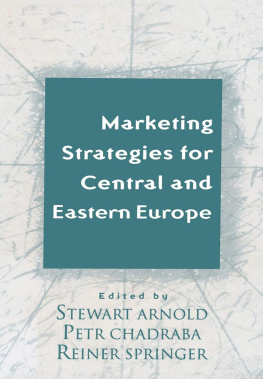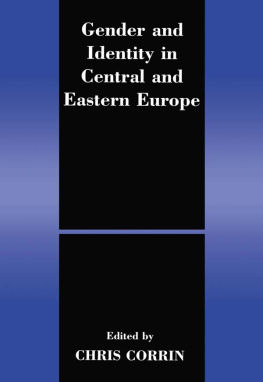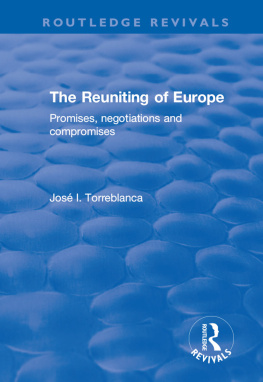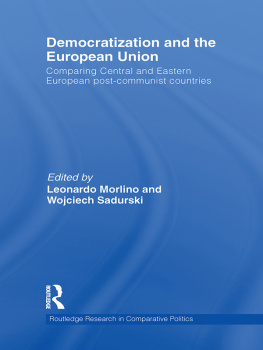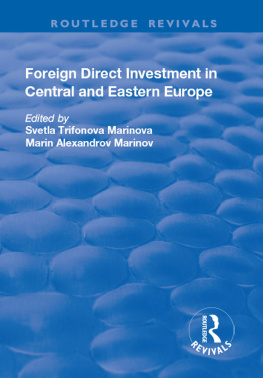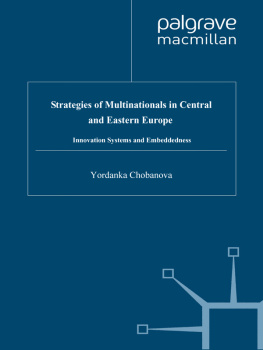First published 2001 by Ashgate Publishing Limited
Published 2019 by Routledge
2 Park Square, Milton Park, Abingdon, Oxon OX14 4RN
52 Vanderbilt Avenue, New York, NY 10017
Routledge is an imprint of the Taylor & Francis Group, an informa business
Copyright 2001 Stewart Arnold, Petr Chadraba and Reiner Springer
All rights reserved. No part of this book may be reprinted or reproduced or utilised in any form or by any electronic, mechanical, or other means, now known or hereafter invented, including photocopying and recording, or in any information storage or retrieval system, without permission in writing from the publishers.
Notice:
Product or corporate names may be trademarks or registered trademarks, and are used only for identification and explanation without intent to infringe.
British Library Cataloguing in Publication Data
Marketing strategies for central and eastern Europe
1. Marketing - Europe, Central - Management 2. Marketing -
Europe, Eastern - Management
I. Arnold, Stewart II. Chadraba, Petr III. Springer, Reiner
658.8'02'0943
Library of Congress Control Number: 00-134019
ISBN 13: 978-1-138-71826-5 (hbk)
Contents
Stewart Arnold, Petr Chadraba, and Reiner Springer
Matt Miljan and Mart Sorg
Jorma Larimo
Roland Leitinger
Antti Helanter and Asta Salmi
Colin Veghes
Alun Tlusty-Sheen
Stewart Arnold
John Dawson and John Henley
Ildiko Gergatz and Maria Trocsik
Malgorzata Gornik-Durose
Maria Pietras
James A. Talaga
Mieczyslaw Ciurla and Milleniusz W. Nowak
Ica Rojsek and Darja Podobnik
Regina Virvilaite and Laimona Sliburyte
Stewart Arnold Baltic Region Research Programme, Hull University Business School, University of Hull, Hull, UK.
Petr Chad raba Kellstadt Center for Marketing Analysis and Planning, DePaul University, Chicago, USA.
Mieczyslaw Ciurla Institute of Industrial Engineering and Management, Technical University of Wroclaw, Wroclaw, Poland.
John Dawson University of Edinburgh, Edinburgh, UK.
Ildik Gergtz Janus Pannonius University, Pecs, Hungary.
Malgorzata Grnik-Durose Silesian University, Katowice, Poland.
Antti Helanter Helsinki School of Economics and Business Administration, Helsinki, Finland.
John Henley University of Edinburgh, Edinburgh, UK.
Jorma Larimo University of Vaasa, Vaasa, Finland.
Roland Leitinger University of Economics and Business Administration, Vienna, Austria.
Mait Miljan University of Tartu, Tartu, Estonia.
Milleniusz W. Nowak Institute of Industrial Engineering and Management, Technical University of Wroclaw, Wroclaw, Poland.
Maria Pietras Silesian University, Katowice, Poland.
Darja Podobnik University of Ljubljana, Ljubljana, Slovenia.
Ia Rojek University of Ljubljana, Ljubljana, Slovenia.
Asta Salmi Helsinki School of Economics and Business Administration, Helsinki, Finland.
Alun Tlusty-Sheen London Business School, London, UK.
Laimona Sliburyte Kaunas University of Technology, Kaunas, Lithuania.
Mart Srg University of Tartu, Tartu, Estonia.
Reiner Springer Department of International Business, University of Economics and Business Administration, Vienna, Austria.
James A. Talaga La Salle University, Philadelphia, USA.
Mria Trcsik Janus Pannonius University, Pecs, Hungary.
Calin Veghes Academy of Economic Studies, Bucharest, Romania.
Regina Virvilaite Kaunas University of Technology, Kaunas, Lithuania.
STEWART ARNOLD, PETR CHADRABA and REINER SPRINGER
Features of Marketing in Central and Eastern Europe
Successful international marketing requires the development and implementation of marketing strategies responsive to different environments. In the emerging markets of Central and Eastern Europe (CEE) the present environmental differences when compared to Western markets are major. However, it can be expected that, over time, with continued transition, we will see convergence in the business environment and marketing infrastructure of the West and the East. Systemic differences of the past will eventually disappear. At present, there are differences in the focus, objectives and execution of marketing, making it imperative for companies entering the region to understand the existing disparities and to account for these in their marketing strategies.
The key question today is: What are the unique features of the marketing environment in Central and Eastern Europe and what impact do the features have on the strategies used to enter and penetrate this region?
Our book attempts to discuss this question. In research papers presented at the 6th Annual Conference on Marketing Strategies for Central and Eastern Europe, held from December 2 to 4, 1998 in Vienna and jointly organised by the Kellstadt Center for Marketing Analysis and Planning, DePaul University, Chicago and Institut fr Betriebswirtschaftslehre, Wirtschaftsuniversitt Wien, authors from Eastern and Western countries present their view on how best to enter these markets in transition. The framework of the conference, which has emerged over the past six years, is the economic transition of countries in Central and Eastern Europe and its contribution to the conventional thinking on international marketing.
On the following pages the editors view on marketing in Central and Eastern Europe is being presented and a summarisation of the main features and research results from the selected papers is presented.


